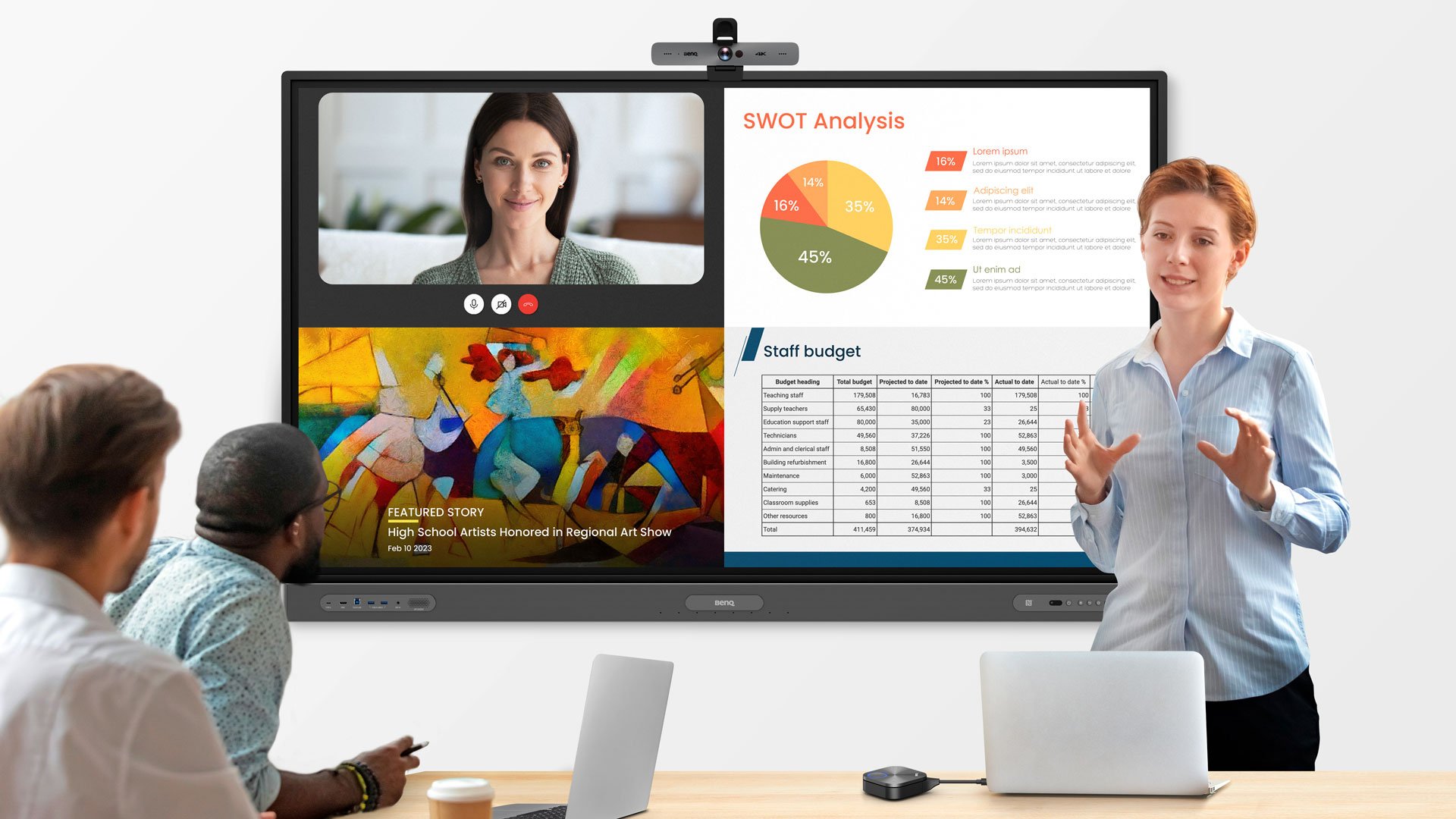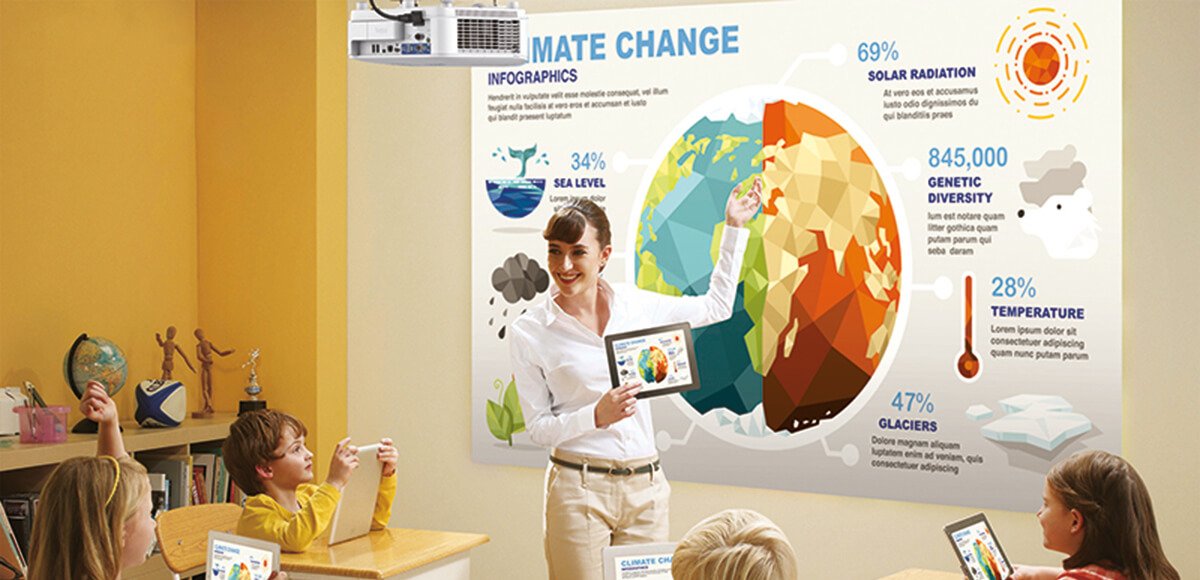The prevalence of touchscreens in schools and workplaces make them viable hotbeds for disease transmission. How can antimicrobial nano-ionic silver be used to protect interactive display users?
How often do you touch your face? On a normal day, a typical person is said to touch their face an average of 23 times per hour.1 Other researchers claim that the figure is actually much higher and can go up to 69 times. Just how risky is this? Although unconsciously rubbing your nose or running a thumb through your lips may seem harmless, these simple gestures make it easy for pathogens to enter our body and lead to infections.
The US Center for Disease Control (CDC) notes that people can easily pick up germs by touching contaminated surfaces.2 Desks, keyboards, whiteboard pens, and touchscreen displays may carry disease-causing pathogens if they are sneezed on or if they come in contact with another tainted object. This is why the CDC recommends frequent handwashing and disinfection of exposed surfaces to prevent disease and further transmission of germs.


In the case of shared devices, disinfection after every use may prove impractical. For example, having to wipe down a touchscreen or interactive display every time a user finishes their turn may stall discussions, whether it’s during a class or a meeting. It is important then to consider—when selecting technologies to adopt for a school or workplace setting—whether or not a device has built-in measures that prevent surface transmission.
One of the most effective antimicrobial measures is the use of silver nanoparticles (AgNPs)—a method embraced by the medical community for the material’s effectiveness against the spread of bacteria, certain strains of viruses, and other forms of germs.3 Organisations like the US Food and Drug Administration (FDA), Korea's Testing & Research Institute for Chemical Industry, and Japan's Society of International Sustaining Growth for Antimicrobial Articles, all formally recognise its effectiveness, leading several manufacturers to include regulated amounts of nano-ionic silver in the formulation of their products.
Of the available goods that use nano-ionic silver, healthcare and fitness devices account for 53% of the total share. About 10% of all nano-ionic silver applications go into the production of food-safe containers, while only 3% go to electronic devices. This is a fairly significant figure given how ubiquitous these devices are. Only a select number of electronics manufacturers offer germ-resistant screens that have adopted this technology. But just how effective are these screens? And how does nano-ionic silver even work?
Silver nanoparticles naturally release silver ions (Ag+). Every time a user touches a germ-resistant screen with Ag+, the germs they transfer onto the surface react with these ions. The Ag+ ions penetrate the microorganisms, preventing them from spreading further through cell division or replication. Since germs like Salmonella, E. coli, and other harmful pathogens are unable to survive on the germ-resistant surface, the screen is sterilised, greatly reducing the possibility of surface transmission.
Of course, a number of manufacturers can claim their solutions are germ-resistant. This is why there are reputable certificate-issuing authorities that can verify these claims. These authorities rigorously check whether or not the amount of silver nanoparticles incorporated into products are actually effective against germs or are safe for human contact. If applied to surfaces correctly, the nano-ionic silver in these products can ensure up to 99.9% protection against disease-causing germs. Obviously, there are caveats to this. Several factors may affect the long-term efficacy of germ-resistant products. These include how nano-ionic silver is applied to products and how well these said products are maintained after use. Organisations need to keep these points in mind before investing in any technology claiming germ-resistant properties.
BenQ is the first and only display solutions provider to offer a robust product line of large-format interactive displays that feature germ-resistant screens for both meeting rooms and classrooms. BenQ’s use of nano-ionic silver has been certified by both TÜV Rheinland and the SIAA, ensuring both effectiveness against germs and user safety. To know more about BenQ solutions fitted with germ-resistant technology, check out our corporate and education interactive displays.
1 Kwok, A., et al., "Face touching: A frequent habit that has implications for hand hygiene", American Journal of Infection Control, volume 43, issue 2, 1 February 2015, p.112-114.
2 Centers for Disease Control and Prevention, 'Show Me the Science - Why Wash Your Hands?', CDC, https://www.cdc.gov/handwashing/why-handwashing.html, 10 September 2020, last accessed 28 September 2020.
3 Pulit-Prociak, J, et al., 'Silver nanoparticles – a material of the future…?', Open Chemistry, March 2016








